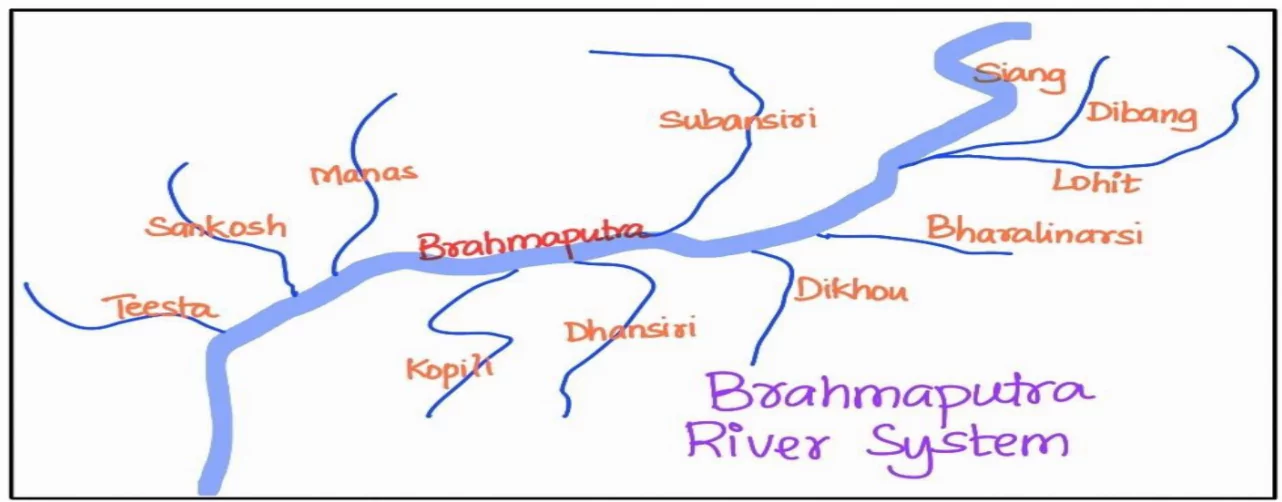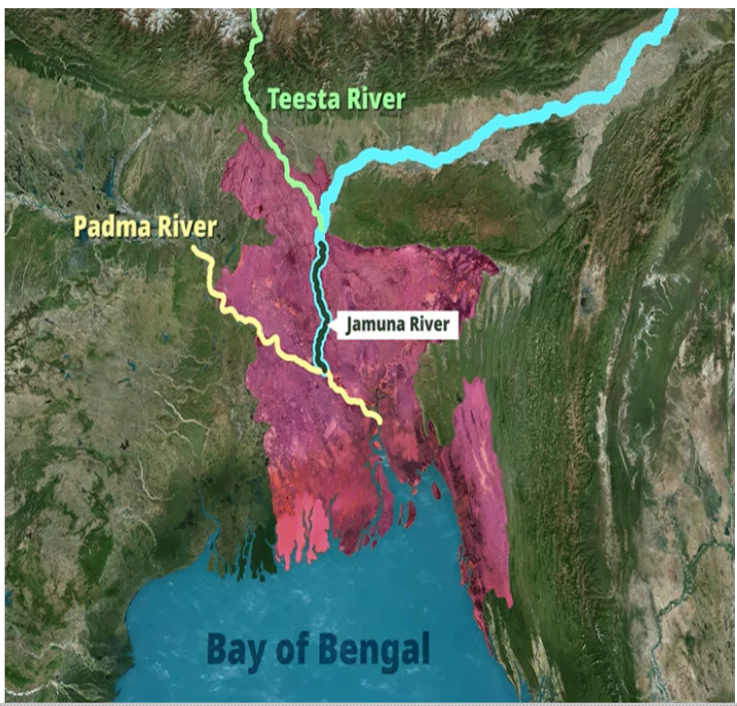![]() May 4, 2024
May 4, 2024
![]() 11673
11673
![]() 0
0
The Brahmaputra River, originating from the Kailash ranges, passes through Tibet, India, and Bangladesh, making it one of the largest rivers globally. With its vast catchment area and significant discharge, it shapes the landscapes and livelihoods of millions across its path. From its steep slopes in Tibet to the braided channels of Assam, the Brahmaputra’s journey is marked by diversity and dynamism.

 Meghana: After the Padma river is joined by Meghana River, it is collectively known as Meghana.
Meghana: After the Padma river is joined by Meghana River, it is collectively known as Meghana.
| Teesta: Origin – Teesta Kangse glacier; forms the border between Sikkim and West Bengal; Rangeet river is the main tributary which originates in Sikkim; It merges with Brahmaputra before falling into the Bay of Bengal. [UPSC 2017] |
| Must Read | |
| Current Affairs | Editorial Analysis |
| Upsc Notes | Upsc Blogs |
| NCERT Notes | Free Main Answer Writing |
The Brahmaputra River, with its mighty flow and network of tributaries, sustains life and ecosystems across its basin. From the rugged terrain of Tibet to the fertile plains of Assam, its journey reflects the interplay of geology, climate, and human activity. Understanding this river’s dynamics is crucial for managing resources and mitigating the impacts of floods and other natural phenomena in the region.
| Related Articles | |
| The Ganga River System: Exploring India’s Waterways | Brahmaputra River System, Tributaries, Map |
| River Systems of India | Ecological Threat Report 2023 |
<div class="new-fform">
</div>
Latest Comments